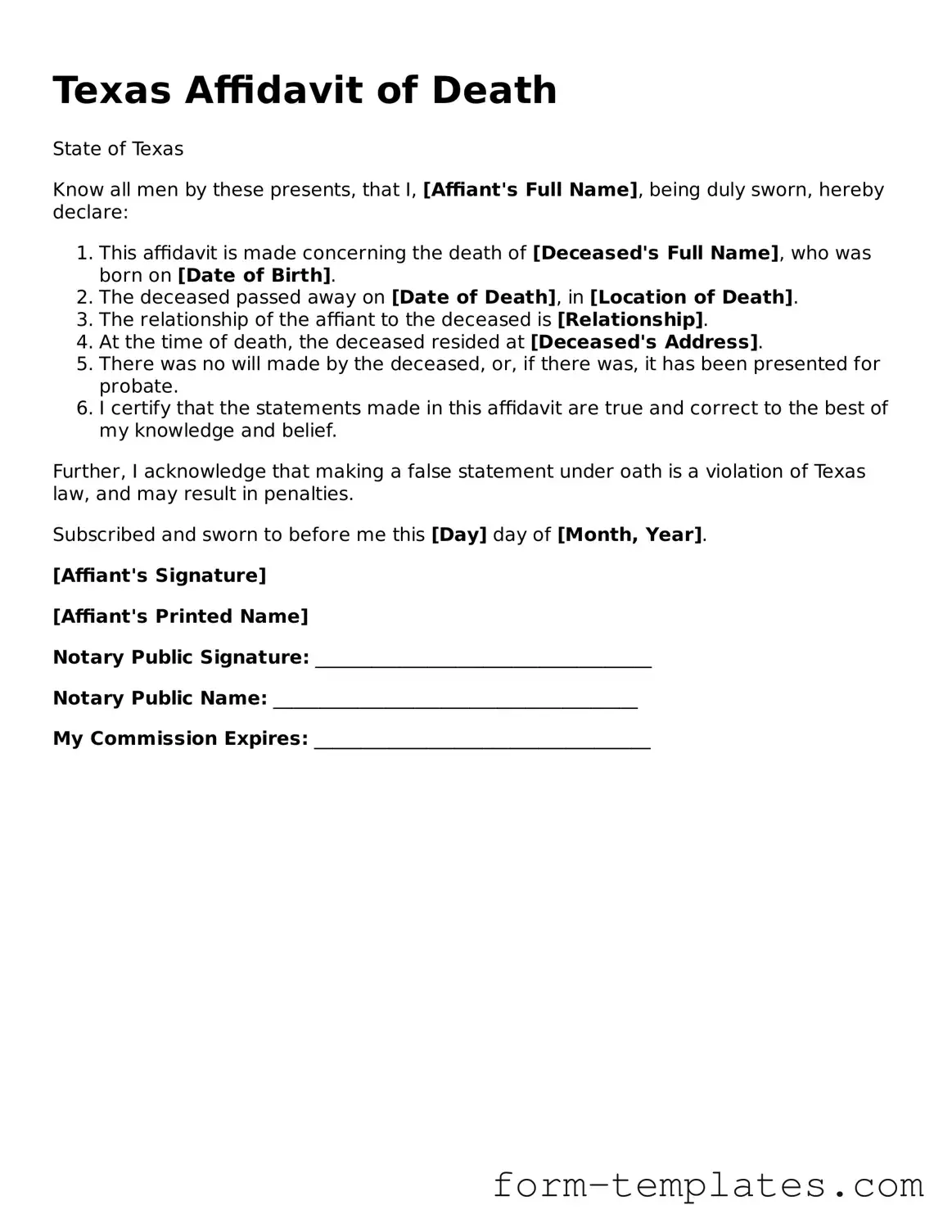Printable Affidavit of Death Form for the State of Texas
The Texas Affidavit of Death form is a legal document used to officially declare the passing of an individual, often required for settling estates or transferring property. This form serves as a vital tool in ensuring that the deceased's affairs are properly managed and documented. Understanding its importance can help ease the process for surviving family members and beneficiaries.
To fill out the Texas Affidavit of Death form, click the button below.
Open Your Document Now
